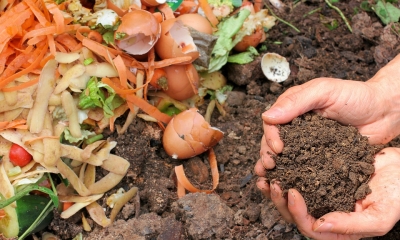What is Bokashi composting?

Bokashi composting provides an effective method of disposing kitchen waste. How is it done? Read on to find out.
Composting is the process of converting organic waste into fertilizer. Bokashi composting is one of the many techniques employed to achieve this.
Bokashi is Japanese for fermented organic matter. This fermenting process needs to be anaerobic, which means there should be no oxygen present during the fermentation.
Organic waste from the kitchen-leftover food, eggs, vegetable peels, even meat- is kept in an airtight container which has a tap at the bottom. A layer of waste is sprinkled with bokashi bran, a dry mixture containing beneficial microbes, and then covered with a plastic/steel plate. Another layer of waste is laid out over it, sprinkled and sealed. The same process is followed until the container is full.
Then the container's lid is closed and it is set aside for a few days for the fermentation to take place. The liquid released during fermentation is drained through the tap at the base.
Once the week is up, the contents of the container can be emptied in the garden. But the mixture shouldn't touch the roots of any plant yet. To become an effective fertilizer, the fermented matter needs to mix well with the soil for a couple of days..
Bokashi composting is popular because it takes up less space and provides an effective method of disposing kitchen waste. Also, during fermentation, the mulch in the container does not give out a bad odour.
Picture Credit : Google